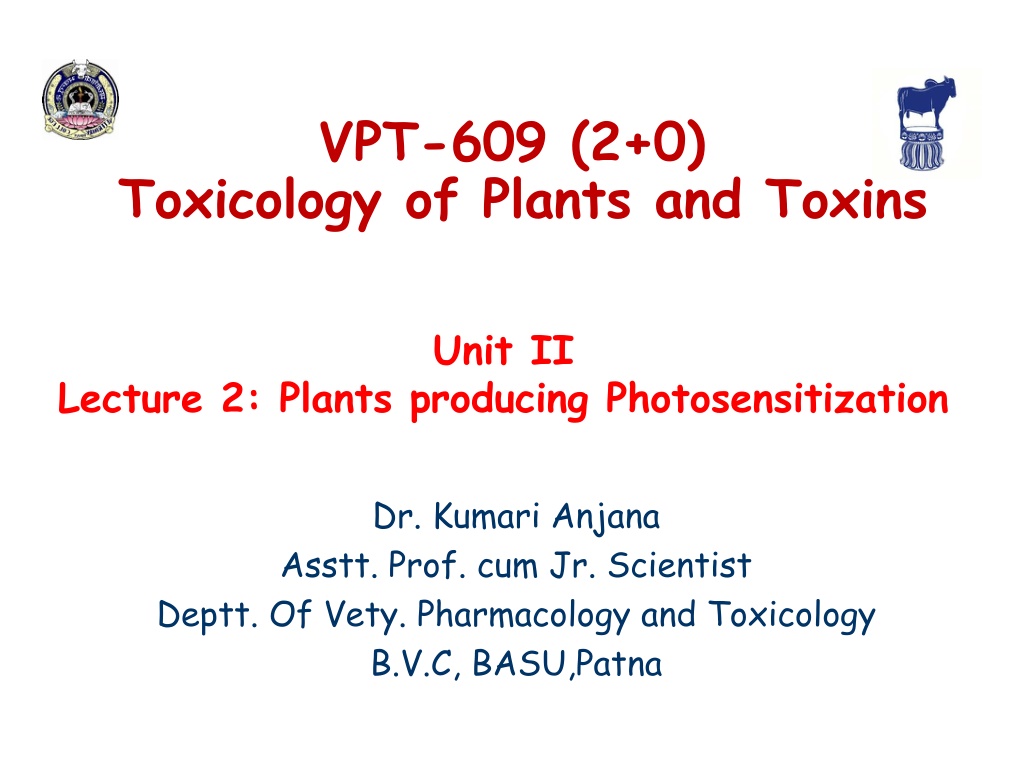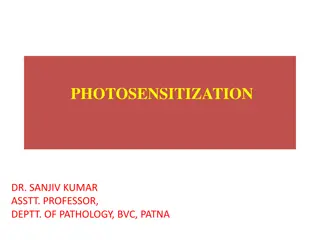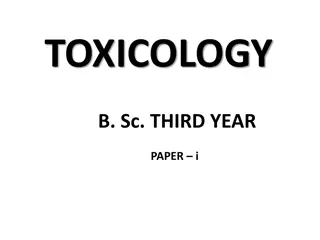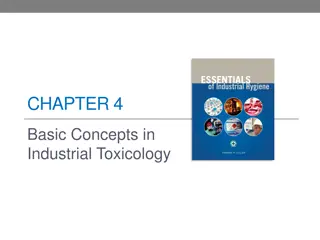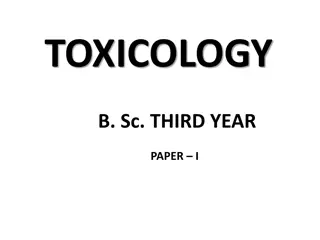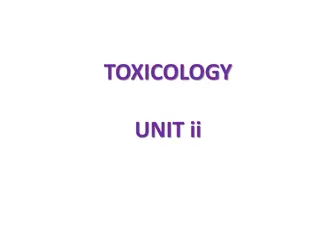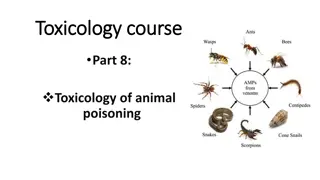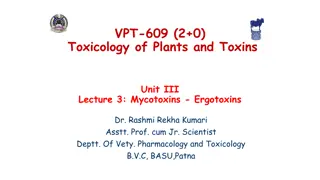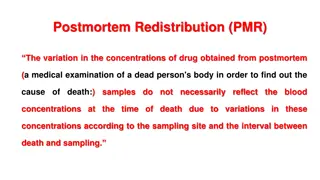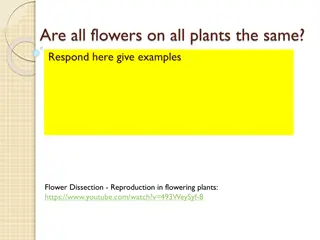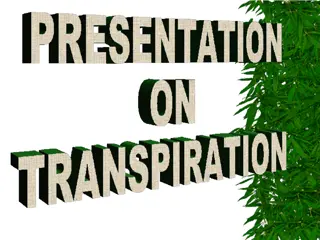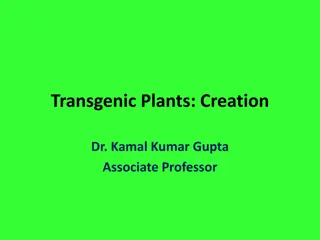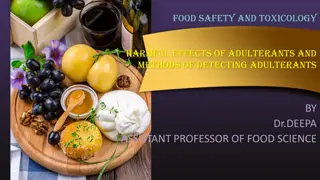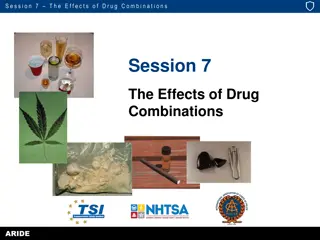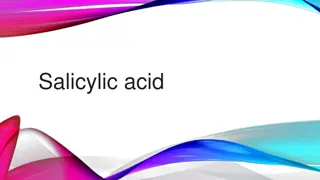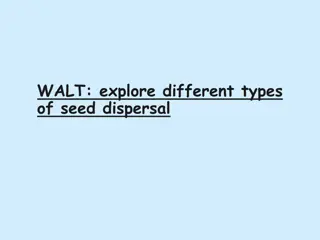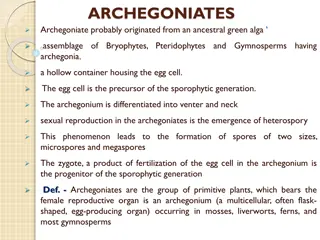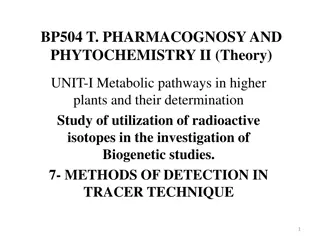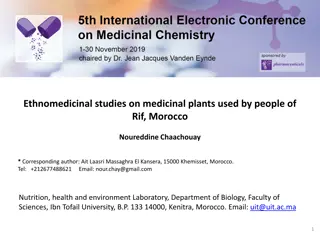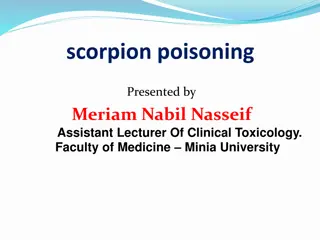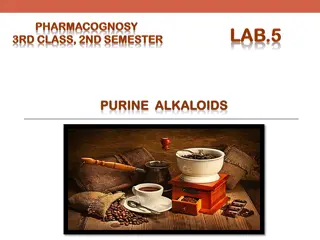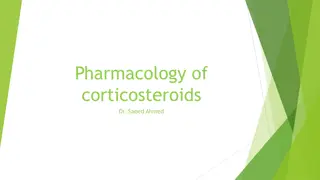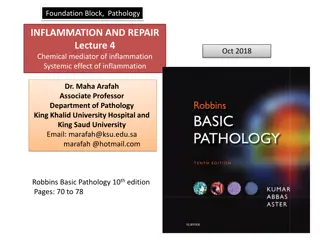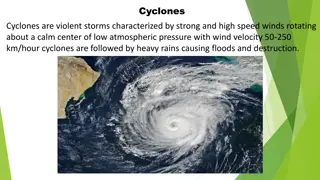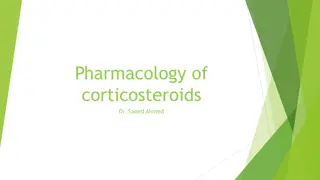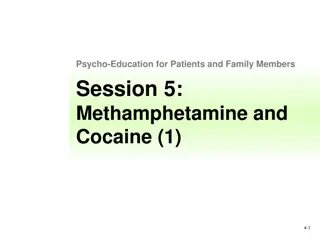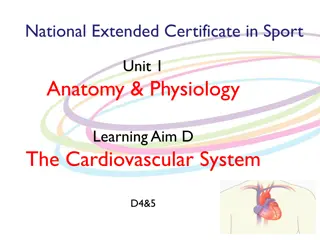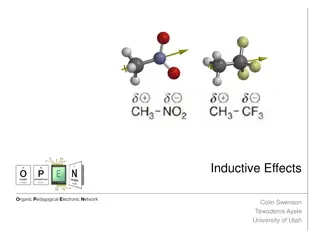Understanding Photosensitization in Plants: Toxicology and Effects
Photosensitization is a syndrome where certain animals are abnormally sensitive to UV and visible light due to the presence of photodynamic agents in their bodies. This condition can be caused by ingesting toxic plants, improper metabolism, or liver damage. Various animal species can be affected by photosensitization, with primary and secondary types being most common. It is crucial to understand the causes, symptoms, and management of this condition to ensure animal well-being.
Download Presentation

Please find below an Image/Link to download the presentation.
The content on the website is provided AS IS for your information and personal use only. It may not be sold, licensed, or shared on other websites without obtaining consent from the author. Download presentation by click this link. If you encounter any issues during the download, it is possible that the publisher has removed the file from their server.
E N D
Presentation Transcript
VPT-609 (2+0) Toxicology of Plants and Toxins Unit II Lecture 2: Plants producing Photosensitization Dr. Kumari Anjana Asstt. Prof. cum Jr. Scientist Deptt. Of Vety. Pharmacology and Toxicology B.V.C, BASU,Patna
Photosensitization Photosensitization: is a syndrome of abnormal sensitivity of the superficial layers of unpigmented or light skinned areas of the body (nose, face, back, udder, testes, teats, mucosa, corneae etc.) to ultraviolet (UV) and visible light probably due to the presence of some abnormal substances, termed as photodynamic agent, in the peripheral circulation. The reaction is limited to body areas which receive direct sunlight (teats and udder in cows; head, face, ears, mandibular area and cornea in sheep and goats etc.
Severity of the condition depends on -the amount of photodynamic substance consumed, duration of ingestion and time of exposure to sunlight. This syndrome may be observed after a few hours to few days of ingestion on exposure to strong sunlight. Thus, photosensitization generally involves a triad of hepato- toxic plant, fresh green feed in the diet and exposure to bright sunlight.
All most all species of animals, namely bovines, ovines, caprines, equines and birds are affected . Canines and felines are rarely affected. Depending upon the circumstances how photodynamic substances accumulates in the body- by ingestion of the preformed photosensitizing agents, abnormal metabolism and/or reduced excretion of phylloerythrin (a product of chlorophyll breakdown), due to hepatic damage and metabolic defects in porphyrin metabolism.
Photosensitization has been categorized into three types namely: Primary photosensitization, Secondary photosensitization and Inherited or congenital photosensitization. The first two types are commonly encountered in animals.
Primary Photosensitization It is due to ingestion of exogenous agents like, drugs/ chemicals or plants containing photodynamic agent. Such agents are inherently photodynamic/photosensitive (get activated by UV radiation of 400 nm). They are mainly of plant origin from livestock point of view. On consumption of these plants, active principles is released in the stomach, comes to the peripheral circulation in the capillaries under skin and on exposure to sunlight, theses sensitize skin similar that by porphyrins.
Some plants causing primary photosensitization (photodynamic principle) are: Parthenium hysterophorum (parthenin), Fagopyrum esculentum (Beech wheat) (Fagopyrin), Hypericum perforatum (st. John s Wort) (Hypericin), Chemicals (Dyes): Acridine and rose bengal. Drugs: Phenothiazine (Sheep: Phenothiazone sulfoxide: Photosensitization keratitis).
Secondary Photosensitization It is a consequence of liver disease (hepatitis) swollen hepatocytes microobstruction of intrahepatic biliary ductules obstruction of common/hepatic bile duct blockade of secretion of bile into intestines.
It is therefore secondary to liver pathology. It is of plant origin. Normally chlorophyll, the photosynthetic pigment of plants, ingested though green greases by the livestock is excreted in faeces. However, due to obstruction of bile ducts/flow (above) phylloerythrin is not excreted and it enters in peripheral photosensitization. circulation causes
Some examples of plants causing hepatotoxicity and secondary photosensitiztion are: Agave spp Lantana camara Shobia arabeca Lupinus augustifolium Senecio jacobaeum Tribulus terrestris etc. In addition all the drugs or chemicals (CCI4) causing liver damage are expected to cause secondary photosensitization in grazing or greens fed livestock.
Congenital photosensitization It is often hereditary in origin due to certain enzymatic abnormalities production of enzymes like catalase, glucose-6- phosphate dehydrogenase etc. in RBCSs and disruption of haeme biosynthetic pathway. or inadequate As a result, porphyrin or its derivatives accumulated in the body including skin. These substances in skin when get exposed to bright sunlight get excited, interact with cellular macromolecules or molecular oxygen to generate toxic free radicals.
Congenital porphyria is a metabolic defect due to abnormality in haeme synthesis: ferroprotoporphyrin has been observed in cattle, swine and cats. As a result, protoporphyrin, uroporphyrin II and coproporphyrin III accumulate in higher concentrations in serum and tissues. Accumulation in dentine and bones give rise to red colour and results in pink tooth or osteohaemochondrsis. There is increased excretion of porphyrins in urine (porphyrinuria) which is reddish brown in colour. Kidneys and lungs of affected animals also fluoresce in UV light. Sometimes anaemia due to inadequate biosynthesis of haemoglobin and reduced life span of erythrocytes is also observed.
Genesis of photosentitization reaction or syndrome In all the photodynamic reaction or photodynamic syndrome is almost similar, though the causes are different as explained above. three types the genesis of The mechanism is explained as follows: The photosensitive or photodynamic agent while come in contact with ultra violet radiation of a specific wave length (< 400 nm) and combines with molecular oxygen to form oxygen radicals.
These oxygen free radicals injure or lyse the lysosomal membrane releasing the destructive lysosomal enzymes into the cytoplasm of the cells and eventually causing necrosis of the tissues underlying the skin. Histamine is released in the damaged tissues causing local reaction in the skin such as intense itching/pruritis, erythema, oedema, oozing serous fluid and pain. The affected skin areas become highly sensitive to secondary bacterial infections. If not treated gangrene sets in with sloughing of the affected skin areas.
Clinical signs The dermal signs start with erythema, itching, oedema (swelling) and irritation. Serous fluid oozes from the area due to rubbing against fixed objects. Necrosis, gangrene and exfoliation or sloughing of the superficial skin layers. Conjunctivitis and lacrimation (watery to thick) in cattle. In sheep blindness may result due to corneal clouding/opacity. In hepatogenous type there is jaundice. The swollen (oedematous) in sheep looks like bottle jaw and the head looks big (big head syndrome). mandibular area
Break of wool and high mortality is also characteristic in sheep. Compared pronounced while oedema is less marked in cattle. to sheep, conjunctivitis is more In porphyrins in urine (porphyrinuria: reddish-brown urine). congenital type increased excretion of The symptoms in equines are similar to that of cattle and sheep except colic, inflammation of the mucus membrane of mouth and brain.
Lantana camera Introduction Lantana camara (common name: lantana, wild sage, bunch berry) is very hardy shrub and is one of the ten most toxic weeds in the world. It was brought to India in early part of the 19th century as an ornamental plant. Now, this plant has found throughout the country, hills and plains. There are several varieties (distinguished by the colour of flowers), the red variety is considered most toxic. It can propagate rapidly by means of stumps or cuttings. Natural propagation : from seeds disseminated by the birds through their droppings or the faeces of moving flocks of sheep and goats.
contd. Grazing livestock normally do not eat the plant due to very pungent odour. Ingestion of leaves is the cause of toxicity. Animal affected: All ruminant : cattle, buffalo, sheep, goat. Non ruminant: horses, rabbit guinea pig, female rat. Lantana camera affect animal husbandry in two ways ; Morbidity: loss of fodder allelopathic effect double edges weapon Mortality: due to ingestion of lantana foliage Allelopathic action: It causes growth inhibition of the neighbouring vegetation, due to which is rapidly changing the ecological balance.
Toxic principles Lantana hepatotoxins are pentacyclic triterpenoids called lantadenes. Some major lantadenes are: lantadene A, lantadene B, lantadene C, lantadene D. All lantadenes have a common core structure of 22- hydroxyl-oleanonic acid. Minor lantadenes : reduced lantadene A and reduced lantadene B are also present in lantana leaves. The toxicity is characterized by hepatotoxicity, cholestasis and photosensitization.
Mechanismof toxicosis Gastrointestinal (GIT) phase, Hepatic phase and Post hepatic phase. Ingestion of lantana foliage - hepatotoxicity and secondary photosensitization. Lantana manifest its toxicity in animals in three phases viz. Gastrointestinal (GIT) phase: o Ingestion of lantana plant. o Absorption toxin from GIT (small intestine). o Metabolism of lantadene A and B Hepatic phase and Post hepatic phase: o Toxins are transported to liver by portal blood. o Toxin interact with hepatocytes and causes intrahepatic cholestasis. o It causes paralysis of gall bladder and closure of bile canaliculi. o Cholistasis causes regurgitation of bile which cause increase in level of bilirubin and phylloerythrine.
contd. Ingestion of plant by the animals Digestion of the plant in the rumen Absorption of the toxin from the rumen and small intestine Transportation of the toxin to the liver in the portal blood Metabolism of the toxin in the liver Secretion of the metabolites into the bile Metabolites injure the bile canalicular membranes Cholestasis
contd. Cholestasis Retention of bilirubin Retention of phylloerythrin Ruminal stasis Retention of toxin (rumen) Absorption of the toxin from the rumen Photosensitization Jaundice Further injury to the liver =
Post mortem lesions: The liver is ochre coloured and greatly swollen. The gall bladder is greatly distended. The rumen contents are usually dry and undigested. There is impaction of faeces in the colon. Adrenals are enlarged and the thickened cortex turns yellow. Diagnosis: History. Clinical signs. Clinical pathology. Post mortem lesions.
Treatment Stop further exposure of the animals to noxious weed. Keep the animals in well shaded areas. Administer IV excessive amounts of glucose saline solution. Give hepatoprotective agents to tone up the liver. Remove the toxic ruminal contents by rumenotomy. Replace the ruminal contents with a suspension containing electrolytes, chaffed forage and rumen liquor from a healthy animals. Antibiotic and antihistaminic therapy. Administer a single dose of activated charcoal (5g/kg) to bind the toxin in the rumen and prevent further absorption. Aversion therapy involves conditioning of animal before they are left for grazing in pasture infested with poisonous plants. Vaccination: Abs against lantadene A & B could be detected in sheep and cattle after injection of the conjugates of these compounds with suitable proteins. In vaccinated animals severity of toxicity less.
